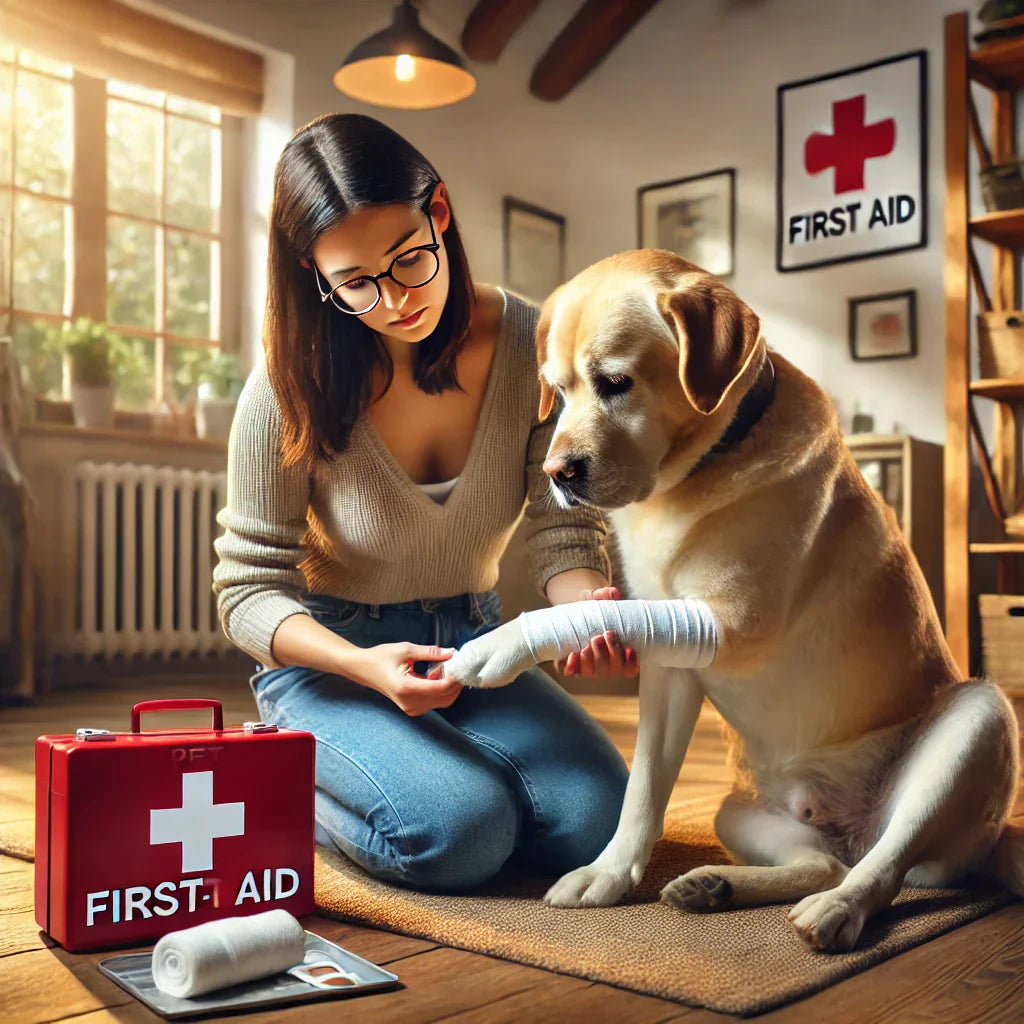
Emergency First Aid Techniques for Saving Your Pet
Share

Introduction: Are You Ready for a Pet Emergency?
Emergencies can strike at any moment, and as a pet owner, knowing how to respond can be life-saving. From choking and poisoning to heatstroke and cardiac arrest, understanding basic first aid for pets can prevent fatalities and improve recovery chances.
This guide covers:
✅ Pet CPR techniques to revive unresponsive pets.
✅ Immediate actions for pet poisoning, choking, and bleeding.
✅ How to recognize emergency symptoms and seek vet care.
✅ Essential items for a pet first aid kit.
🐾 Follow these essential tips to keep your pet safe and healthy and be ready for any crisis.
1. Pet CPR Techniques: How to Revive Your Pet
How to Perform CPR on a Cat or Dog
🚨 If your pet stops breathing or has no pulse, performing CPR correctly can save their life.
📌 Steps to Perform Pet CPR:
✔ Check for breathing and pulse—if absent, begin CPR.
✔ Lay your pet on their right side on a firm surface.
✔ Perform chest compressions:
🔹 Small pets (under 30 lbs.) – Compress chest ½ to 1 inch deep, 100–120 times per minute.
🔹 Large pets (over 30 lbs.) – Compress 1–3 inches deep, 80–100 times per minute.
✔ Give two rescue breaths after every 30 compressions.
✔ Continue CPR until your pet breathes or a vet takes over.
🐾 Learn how to perform CPR on your pet during emergencies and be prepared for the worst.
2. Emergency Procedures for Choking Pets
Choking can be fatal within minutes, so knowing the Heimlich maneuver for pets is crucial.
📌 Signs Your Pet Is Choking:
✔ Pawing at the mouth
✔ Gagging, coughing, or wheezing
✔ Difficulty breathing
How to Perform the Heimlich Maneuver on a Pet
✔ Small dogs/cats: Hold them upside down and apply pressure to the abdomen.
✔ Large dogs: Stand behind your dog, place hands below the ribcage, and thrust upward.
✔ Check the mouth for the object, remove if visible.
🐾 Discover how to perform the Heimlich maneuver on choking pets and save a life.
3. Pet Poisoning Treatment: What to Do Immediately
🚨 Common Pet Toxins:
✔ Chocolate, grapes, and onions – Toxic to dogs.
✔ Household cleaners and antifreeze – Fatal if ingested.
✔ Human medications like ibuprofen – Can cause kidney failure.
📌 Symptoms of Pet Poisoning:
✔ Vomiting, drooling, or seizures
✔ Lethargy, tremors, or difficulty walking
✔ Collapse or loss of consciousness
📌 Immediate Actions for Pet Poisoning:
1️⃣ Identify the toxin and remove access to it.
2️⃣ DO NOT induce vomiting unless instructed by a vet.
3️⃣ Call Pet Poison Control (ASPCA: 1-888-426-4435).
4️⃣ Seek emergency vet care immediately.
🐾 Recognize early warning signs of illness to act quickly and prevent life-threatening situations.
4. Immediate Actions for Pet Heatstroke
🔥 Heatstroke is a deadly emergency that occurs when a pet’s body overheats.
📌 Signs of Heatstroke:
✔ Heavy panting, excessive drooling
✔ Weakness, vomiting, or seizures
✔ Collapse or unconsciousness
📌 Emergency Treatment for Heatstroke:
1️⃣ Move your pet to a cool area.
2️⃣ Apply cool (not ice-cold) water to their body.
3️⃣ Offer small sips of cool water.
4️⃣ Seek emergency vet care immediately.
🐾 Create a safe environment at home to prevent accidents—heatstroke can be avoided!
5. First Aid for Pet Bleeding & Fractures
What to Do If Your Pet Is Bleeding
✔ Apply gentle pressure with sterile gauze.
✔ Elevate the wound to slow bleeding.
✔ Use a clean bandage and seek emergency vet care.
Handling Fractures in Pets
✔ Immobilize the injured limb—use a towel or splint.
✔ DO NOT try to realign bones.
✔ Transport your pet carefully to the vet.
6. Essential Items for a Pet Emergency Kit
Having a DIY pet first aid kit ready can prevent minor injuries from turning critical.
📌 Basic First Aid Kit for Pets at Home
✔ Antiseptic wipes & bandages
✔ Digital thermometer
✔ Tweezers (for removing debris/ticks)
✔ Hydrogen peroxide (only use if instructed by a vet)
✔ Activated charcoal (for certain toxin ingestions)
✔ Muzzle (for pets in pain, to prevent biting)
✔ Emergency contact list (vet, poison control, 24-hour clinic)
7. Preventing & Treating Insecticide Poisoning in Pets
🚨 Many common pesticides are deadly to pets.
📌 Signs of Insecticide Poisoning in Pets:
✔ Excessive drooling & vomiting
✔ Muscle tremors & seizures
✔ Weakness or difficulty breathing
📌 How to Respond:
✔ Rinse skin/fur with water if exposed.
✔ DO NOT use flea treatments not approved for your pet.
✔ Seek vet care immediately.
Conclusion: Be Ready to Act in a Pet Emergency
When seconds matter, knowing what to do can save your pet’s life.
